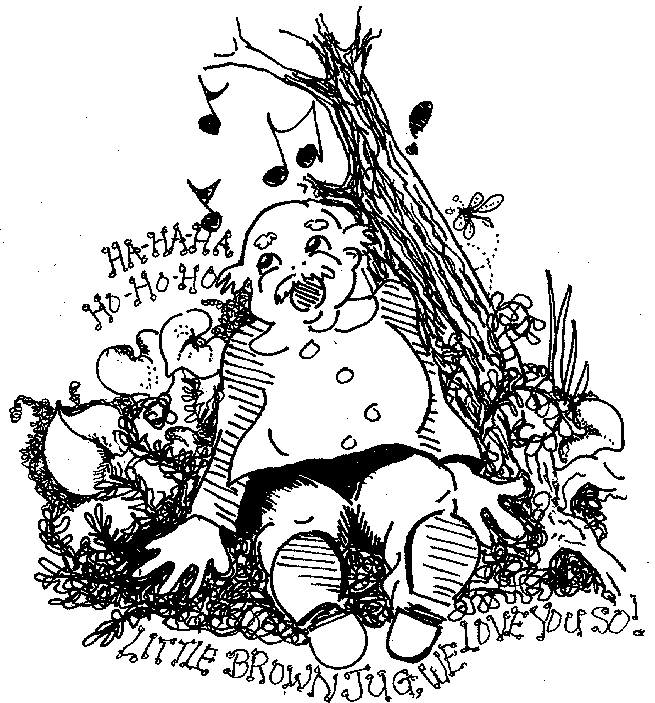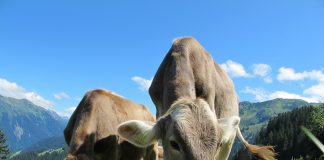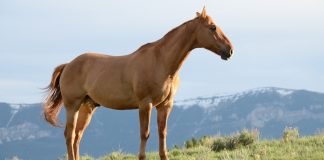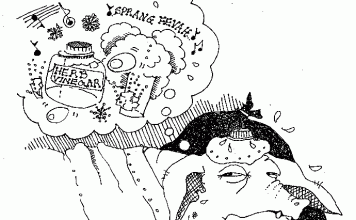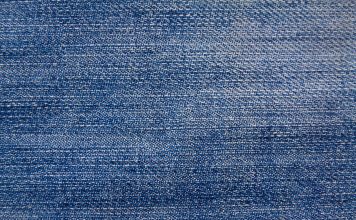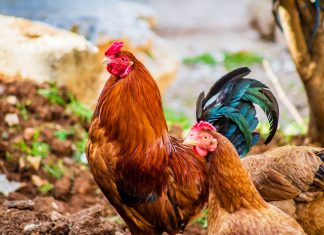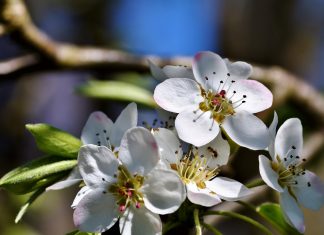| Issue #34 • July/August, 1995 |
Click on pictures for printable, full-sized versions to color.
“It’s a jungle out there!” You’ve probably heard that phrase time and again, but did you ever stop and ponder the fact that “There’s a forest in here?”
Right now, you are probably sitting in the middle of an exotic forest. There are conifers, hardwoods, aromatic cedars, flat-leaved trees, and strange combinations of all of these surrounding you at this very moment!
In your hands you are holding (and reading) part of a pine forest. Are you sitting in a maple or an oak tree? What are your kitchen cupboards made of—beech or poplar trunks, maybe both? That cedar tree gives off such a warm and homey smell, it’s no wonder your mother likes to keep blankets and quilts in the chest made of it.
Have you guessed? You live in parts of forests collected from all over the world. Though maybe not as romantic (and hopefully without as many bugs and lizards) your home is most probably a “woodsy” place to be. Wander around the family room and try to guess at what types of wood you make use of daily. If you can press your fingernail into the surface and make a mark, it is a softwood like pine or cedar. Hardwoods, like oak and hickory, are almost as sturdy as metal. Get a good feel for the touch and smells of these woods, and then put on your hat, grab a notepad and pencil, and plan for a fun day in the woods.
Into the woods
One of the first things that you will probably notice is that the deeper you get into a woodland, the more enchanting the smells become. Deep and rich whiffs of decaying leaves mingle with the secret scent of Christmas given off by pine or spruce needles. Breathe deeply…that smell is magic.
Find a spot on the forest floor that seems to just kind of call to you. Smooth out a spot for yourself and lie down. As you gaze upward, notice that the woods seem to grow in layers.
There are the really tall trees whose arms reach out above all else and grab for sunlight. These branches spread out over the whole forest and create a sort of umbrella or canopy. That’s why they are called the canopy of the forest.
Next are the pretty (and more rounded) trees of the understory. Their name is simple to remember because they live out their whole life story under the canopy.
Now look for the shrub layer. This layer of bushes grows at just about the right height for deer to munch on (and also at just about the right height to snag your britches if you aren’t careful!).
If you turn your head left and right while in your supine position, you will see the more tender herb layer of the forest.
Under your head is the most exciting layer of all, the forest floor. This (like the basement of your house) is where you will find all of the plumbing and wiring that makes the system work so well.
To help yourself remember the scent and feel of the forest, you could make several collections while on your field trip.
A tree collection
A tree collection will be nice to have on hand at home, and if you follow the directions, you can keep this one in your desk drawer. Take the notepad that you brought with you, and carefully press one of its pages onto the bark of a tree. With the side of a pencil, gently rub the surface of the paper. The “thumbprint” of the tree should begin to appear on your paper. These “thumbprints” are very important to botanists when they are identifying trees. Now, on the same page, take a leaf from that tree and rub its image onto the paper beside the bark rubbing. (Yes, just like in kindergarten!) If you do this with all of the different kinds of trees in your woodlot, you can take the notepad to the library and identify what’s growing there by using a field guide to the trees. This is a fun way to keep a whole forest at your fingertips!
Make a smell collection
With a little work, you can make a wonderful collection of smells to present to a friend. Bring some of that magic home to share! There will be different smells to find in different parts of the countryside, so borrow one leaf from each tree or bush that you pass, give it a twist and a sniff, then save and identify it if it tickles your fancy! Mark down in the pages of your notepad directions for how to reach your favorite smells on the next outing. Into the pages of your notepad, you could also press and save the needles of pine, fir, or spruce. When you give them a little twist to release their oils, they will delight you with their freshness. (Did you know that they can withstand much harsher conditions than broad-leaved trees because these waxy oils prevent the tree’s watery juices from evaporating as quickly? It’s kind of like a raincoat in reverse!)
If you live in the Midwest, or in eastern or southern parts of the country, find a sassafras tree and borrow one of its leaves. A deep whiff of this fragrance will “take you away.” If you are a romantic, the lemon-musk odor that’s released when you crush these leaves will bring visions of purple lace and bustled dresses. If you are in a forest that’s prolific with these trees, try and find a young one and cut a section of its root to take home. These roots were used to dye wool orange (can you see why?) and the root bark was boiled to make sassafras tea. Be sure to have an adult help you, and check to be sure that it is sassafras before boiling the root for tea!
Do you live in the northern U.S. or Canada? Then try and find a mat of moxie-plum. This ground-hugging vine will thrill your senses. It smells like doublemint chewing gum!
Wild onions look like the “tame” ones, but they are smaller and more pungent (which means that they really stink). Take home a bulb or two if you like, but you will probably take the smell with you (on your fingers) whether you mean to or not!
Wild ginger is one of the most lovable of the forest plants. It hugs itself close to the ground as if it wants to hide its treasures. The smell of its crushed leaves will make your mouth water, but don’t be grabby! Just pick one leaf. The ginger root can be boiled down and its juices mixed with sugar to make hard candy, but the real treat lies hidden beneath the bowing leaves. Folk people call these plants “little brown jugs” because of what’s hiding there. If you’re lucky, you will find a plant that is in flower. The flowers are like tiny brown “moonshine jugs.” They peek out from under the leaves, but stay hidden and safe unless you lift their fragrant covers. There is a folk song to remind you forever of the sweet wild ginger fragrance:
My wife and I live all alone
In a little brown house we call our own.
I love her, She loves me,
Oh, little brown jug how we love thee!
Ha ha ha, ho ho ho,
Little brown jug, we love you so!
Ho ho ho, hee hee hee,
Little brown jug how we love thee!
Start a forest in a pot!
If your visit to the forest is during the summer months, you might be lucky enough to come across a patch of ferns. These dwellers of the herb layer of the forest are not only beautiful, they are also very interesting.
Examine the fronds of a fern, and check the backs of them for a series of scabby little bumps. These are the fern reproductive system. Take one frond with big ripe-looking bumps (or sori) and slip it into your notepad to take home.
Wait for a bright, sunny day and place the fern, sori side up, on a large piece of paper. You can see what happens with your naked eye, but it’s more fun if you use a magnifying glass. The sun will slowly pop open these little spore bags. Watch as the fine powdery stuff is spewed out and onto the paper.
Now carefully shake the paper over a pot of sterile potting soil. The tiny spores will land on the damp soil and begin a new life cycle. At first a series of little green heart shapes will (romantically) appear. These hold the male and female parts of a fern. If you keep your soil moist enough, these two parts will swim to each other and create a new baby fern plant. What a winsome way to bring part of the forest home with you!
On this trip to the woods, you have only scratched the surface of the exciting things happening in our woodlands. Visit often and you will discover and save your own amazing forest facts!


